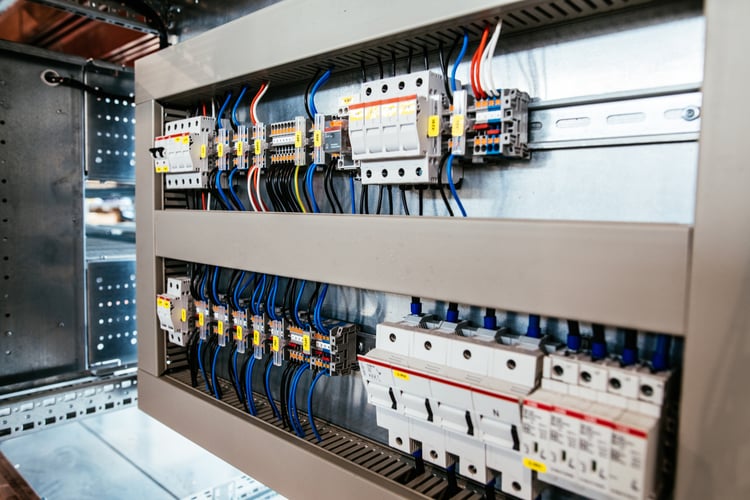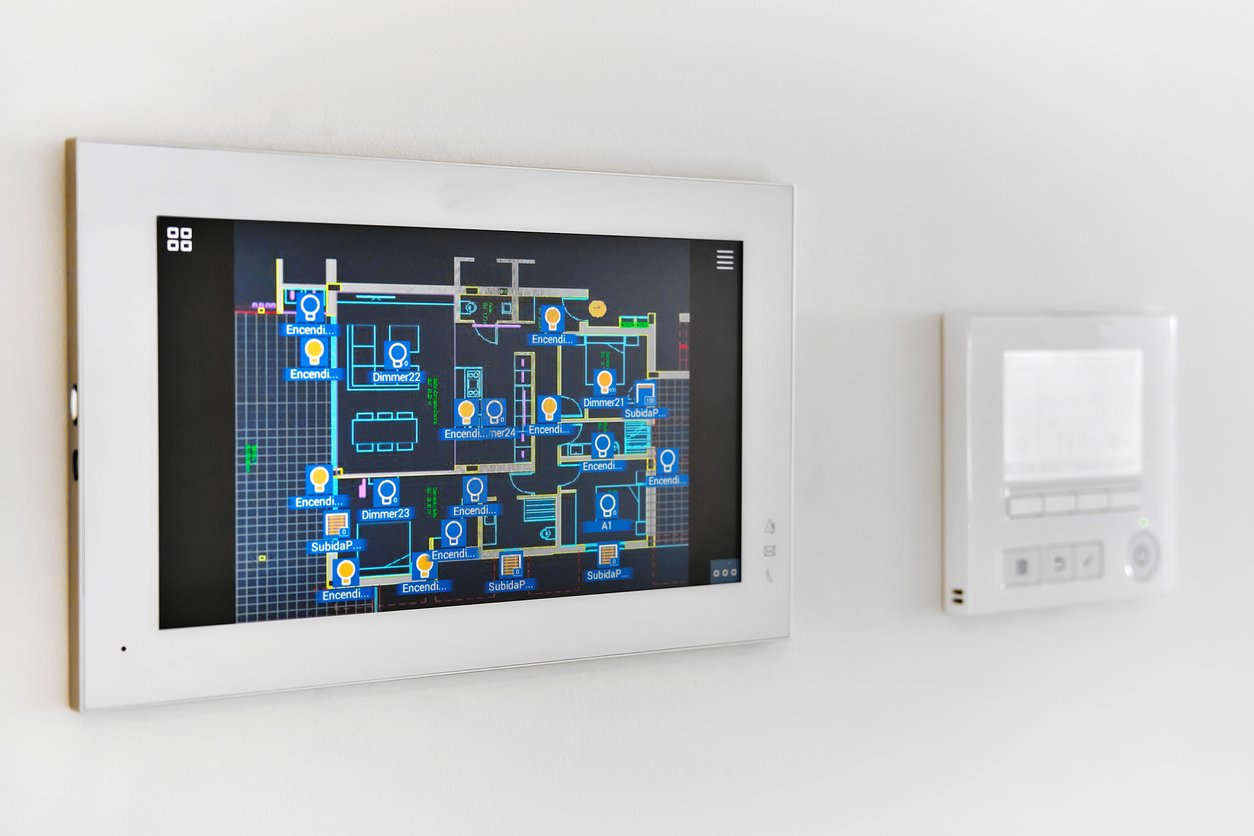In the current context of the automation boom, Building Management Systems, or BMS for short, have established themselves as essential elements for the efficient management of buildings.
These intelligent systems are not limited to regulating the temperature in HVAC or the level and intensity of lighting, but encompass a wide range of functionalities, such as optimizing processes related to the energy efficiency of the building, the sustainable behaviour of the building, the safety of the occupants and the building's contents, and the improvement of health and well-being conditions.
What is a BMS?
A Building Management System(BMS) is a centralised system that controls and monitors the correct functioning of the intelligent components of a building, with the aim of optimising its operation.
These smart components can be found incorporated, among others, in HVAC systems, ventilation, lighting (natural and artificial), security and accessibility, indoor air pollution, and water supply. The BMS collects information on the behaviour of these systems via sensors and sends commands back to the intelligent components of these systems to correct any deviations of each system from the values that have been set as target parameters in the preset configurations.
This process is managed through specialized software that will have different characteristics depending on the volume of information to be managed, the systems managed, and the degree of specificity necessary to maintain the setpoint of each controlled variable.
In this sense, BMS systems have the capacity to manage both general aspects and tasks with a high degree of specificity, so that the needs or functionalities required of the system will determine the specific technology and communication protocols to be implemented in the BMS itself.

As an illustrative example, a BMS can operate at the building level, act individually by floors, or even regulate individual rooms. This will imply that the BMS system will be more complex with a higher degree of specificity, and likewise, the systems and facilities controlled by this BMS will have to be as well.
A common example of the operation of a BMS system would be motorised blinds (intelligent component) that are connected to a BMS, which in turn has a connection to a natural lighting probe (sensor), so that when the signal that the sensor sends to the BMS is higher than a predetermined value, the BMS itself sends a command to the motorised blind ordering its deployment.
Applications and opportunities
BMS systems offer a wide range of opportunities that can be leveraged to significantly improve building management and their sustainability. The decision to implement a BMS should be made during the design phase of the building, after identifying the specific issues to be addressed with its help, and including equipment and systems that are compatible with the functionalities the BMS is intended to offer.
It is important to note that the implementation of a BMS is aligned with the objectives of sustainability and reduction of the environmental impact pursued by the main sustainability certifications, such as BREEAM, LEED, VERDE or DGNB. Their installation is also a key tool in the commissioning process of the building.
Let's look at some of the most notable applications of BMS systems:
- Energy efficiency: BMSs can optimize the operation of HVAC systems, lighting and other processes to reduce energy consumption and equipment running hours, resulting in lower operating costs and a lower carbon footprint.
- Water efficiency and other environmental resources: the BMS can monitor the flow of water in circuits, processes and consumption, detecting leaks or anomalous profiles that give rise to a warning alarm to the user.
- Well-being and comfort: BMS can ensure optimal conditions of temperature, humidity, and concentration of indoor air pollutants, improving occupant satisfaction and performance.
- Security: Security is a fundamental priority in any environment. The BMS can integrate fire detection systems, video surveillance, access control, and alarms, providing a coordinated and effective response in emergency situations.
Smart real estate asset management
BMS systems are a key tool for the efficient management of real estate assets, they provide real-time information on how the different systems in a building are performing, and can produce reports on all the information recorded. In new construction buildings, the implementation of BMS systems to control HVAC, domestic hot water, and ventilation, as well as lighting, is already common.
For example, by tracking the failure frequency of an automatic gate over a given period, the owning company can make informed decisions about whether it is more convenient to replace it or to perform additional periodic repairs on it. This ability to retrieve detailed information on system failures enables informed decision-making in real time.
In addition, consumption records obtained through BMS systems allow comparisons before and after implementing specific actions, as well as a/b testing, which enables an accurate assessment of the effectiveness of the measures taken.
Proportionality and scale of a BMS system
As we have mentioned throughout this article, one of the most outstanding aspects of BMS systems is their versatility and adaptability to a wide range of buildings. There are numerous types of BMS systems available on the market, and their selection is based on specific considerations of each project, taking into account factors such as scale, the reliability required of the system (accuracy of sensor readings, manoeuvrability of intelligent components, etc.), and the granularity of the variables to be controlled.
A BMS can be implemented proportionally to the needs of a specific building. This means that it can be sized and configured to meet the control and monitoring requirements of a particular building. Whether it is a small residential building or an industrial complex, BMS systems can be adapted as needed.
In conclusion, BMS systems represent a technological advancement for the present and future of building management, contributing to energy efficiency, environmental sustainability, and the comfort of their occupants. Its adoption not only improves the profitability of the buildings, but also promotes a more sustainable and safer environment for those who live and work in them.


